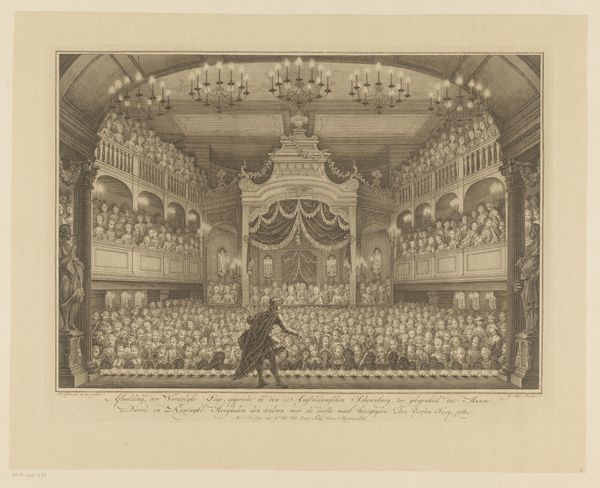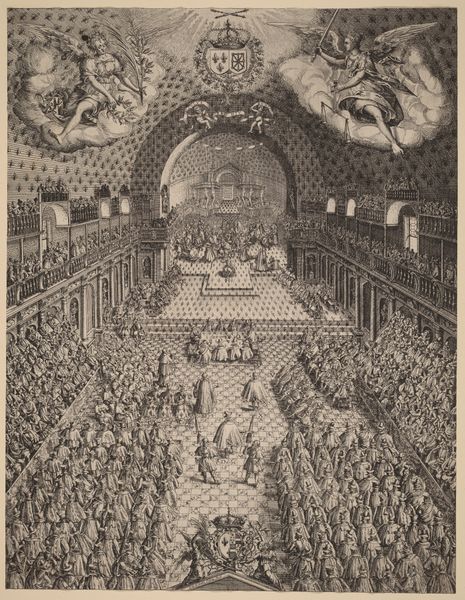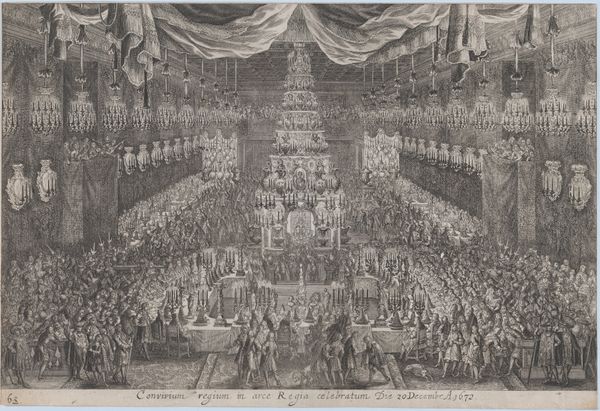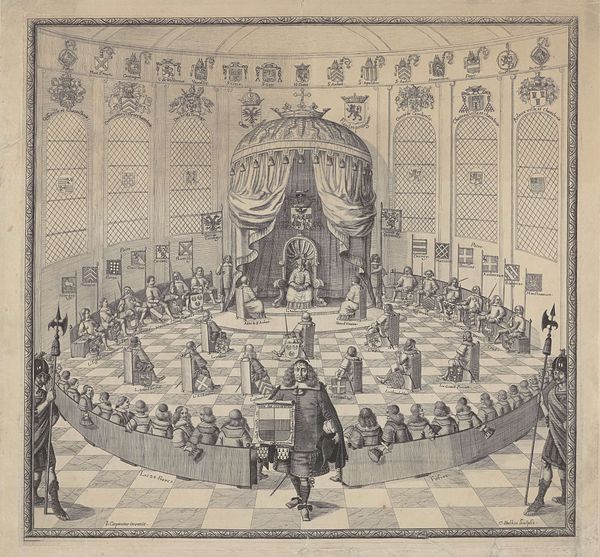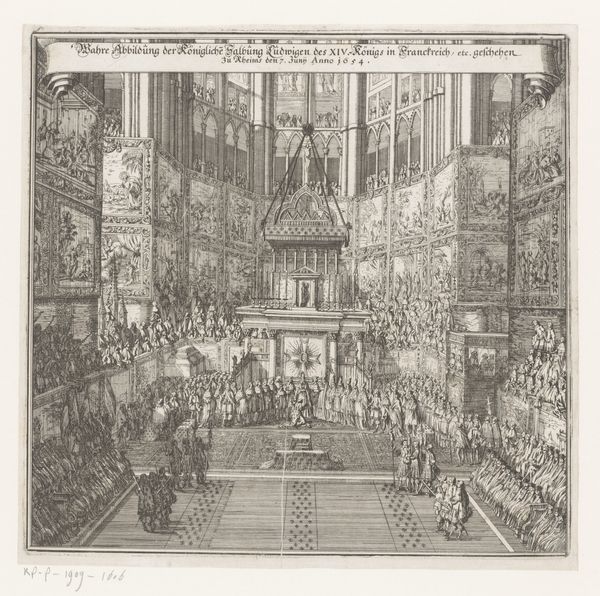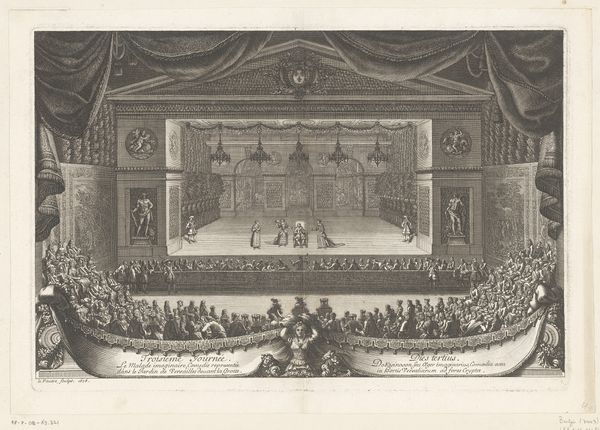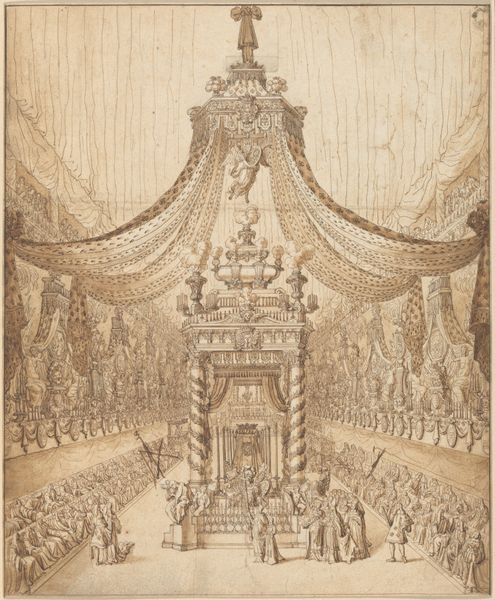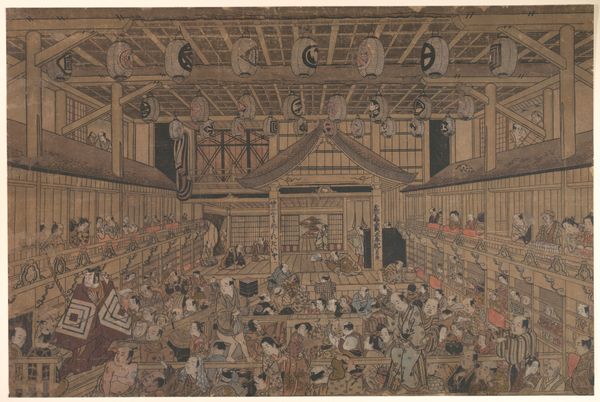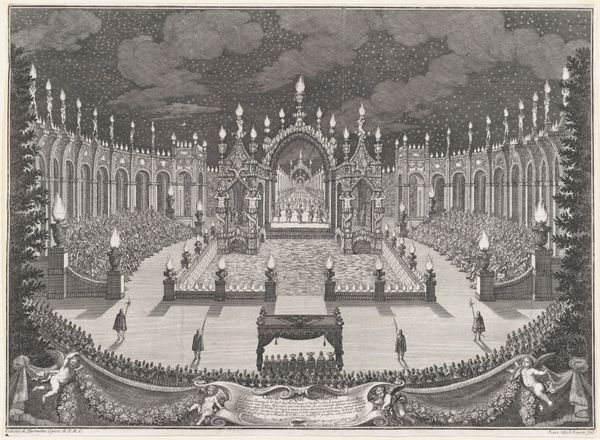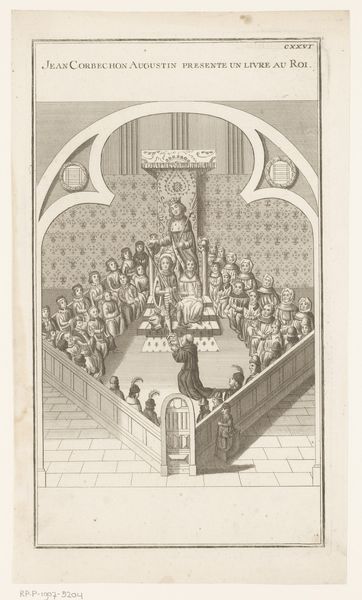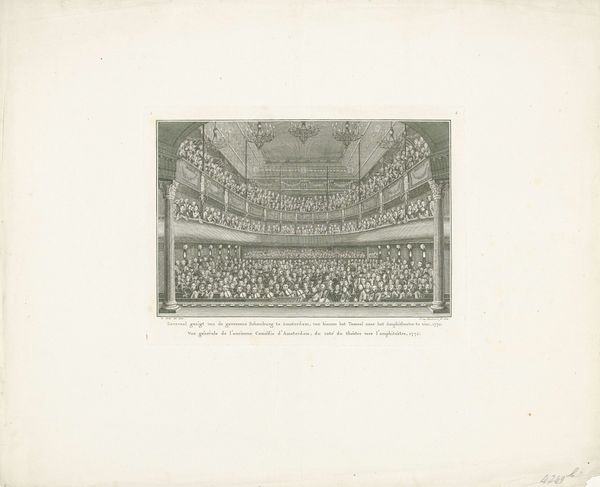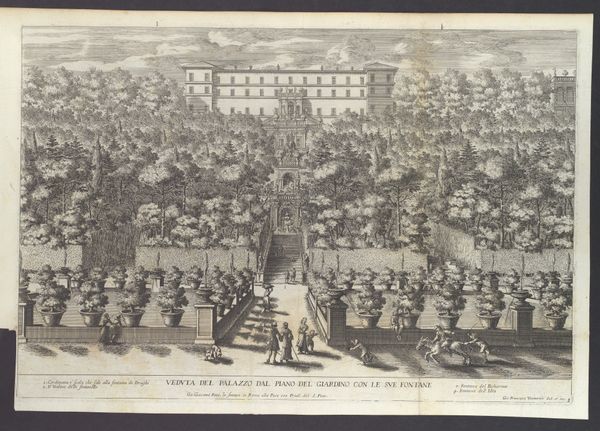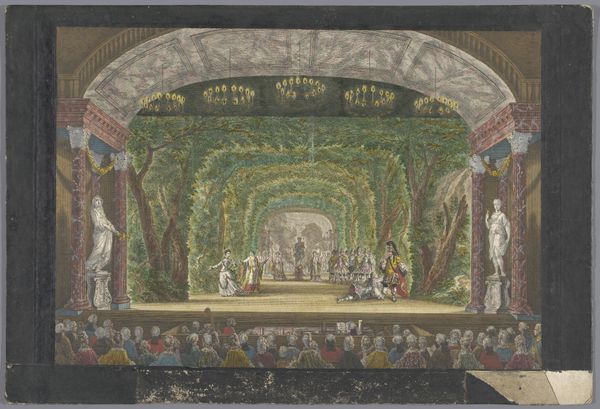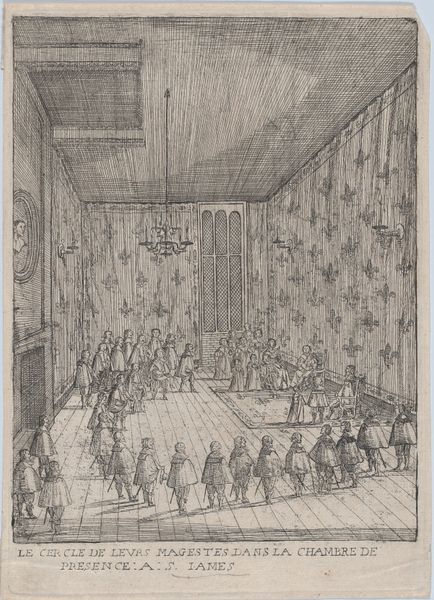
Gezicht op de vorstelijke loge van de Schouwburg te Amsterdam met een voorstelling voor Willem V en Wilhelmina van Pruisen op 1 juni 1768 1768 - 1799
0:00
0:00
Dimensions: height 309 mm, width 451 mm
Copyright: Rijks Museum: Open Domain
Editor: Here we have "Gezicht op de vorstelijke loge van de Schouwburg te Amsterdam met een voorstelling voor Willem V en Wilhelmina van Pruisen op 1 juni 1768," a watercolor painting created sometime between 1768 and 1799 by an anonymous artist. The scale of this painting is impressive. The theatre is packed! What do you make of it? Curator: This watercolor provides a fascinating snapshot of the socio-political landscape of the Netherlands in the late 18th century. Consider the theatre itself, a public space, yet with a clearly defined "royal box." It reflects a society grappling with evolving power dynamics. Who do you think was allowed entry and how would have class divisions within the theatre operated? Editor: I imagine attendance was limited by wealth and social standing. Perhaps different seating sections reflected different tiers of society? Curator: Exactly. Notice how the architecture and the ornate details draw the eye directly to the royal box. The presentation emphasizes their elevated status. The very act of depicting this scene normalizes and reinforces their authority, even within a space meant for public entertainment. Beyond this, one could question what are the optics for presenting the spectacle of Royalty consuming another spectacle? Editor: So, the painting itself becomes a commentary on power, not just a neutral record of an event. I never thought of it that way before! I suppose the presence of royalty automatically transformed this theatre space into a potent symbol of their dominion? Curator: Precisely! And the medium, watercolor, allowed for a level of detail that conveys the richness of the event and therefore, in some ways, their power. Considering it's anonymous, we might also wonder who commissioned this work and for what purpose. These contextual details deeply influence how we perceive art. Editor: This gives me a lot to think about. Looking at this image through a political lens makes it much more intriguing. Thanks for sharing your expertise. Curator: My pleasure. Hopefully, you’ll keep digging beneath the surface to appreciate the cultural and historical narratives embedded within visual art.
Comments
No comments
Be the first to comment and join the conversation on the ultimate creative platform.
